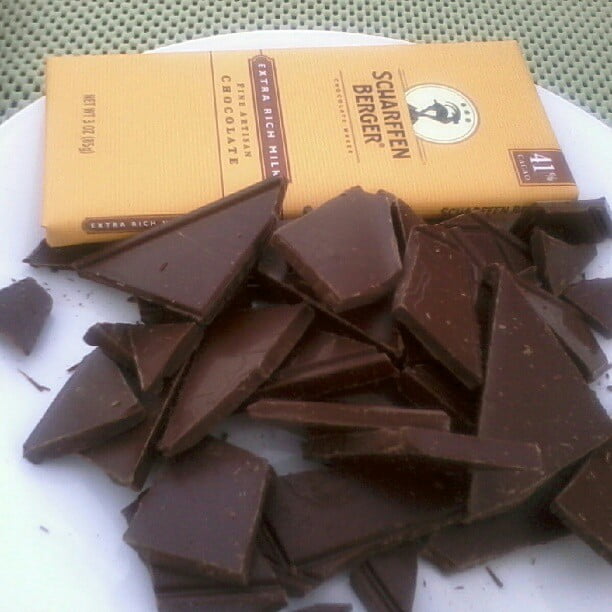When it comes to indulging in chocolate, there’s a world beyond the mass-produced bars in supermarkets. Artisanal chocolate makers have emerged to offer a new level of chocolate-tasting experiences. These makers use traditional methods and high-quality ingredients to craft small batches of chocolate that are unique in flavor and texture. In this article, we will explore the world of artisanal chocolate and take you on a journey through the distinctive flavors and textures of handcrafted chocolate.
in The Art of Handcrafted Chocolate Making
Artisanal chocolate makers are often small-scale operations where the chocolatier takes excellent care in every chocolate-making process. These makers use premium ingredients, such as single-origin cocoa beans, to create chocolate full of flavor and character. The chocolate is typically made in small batches, which allows the chocolatier to control the quality and taste of each set.
Making artisanal chocolate begins with sourcing the best quality cocoa beans worldwide. Once the beans are in the chocolatier’s possession, they are roasted, ground, and refined into chocolate liquor. Sugar and other flavorings are added to the chocolate liquor to create a unique flavor profile. The chocolate is then tempered, which gives it a shiny appearance and a smooth texture.

Unique Flavors of Handcrafted Chocolate
Artisanal chocolate offers a range of unique and distinctive flavors not found in mass-produced chocolate bars. One of the reasons for this is the use of high-quality cocoa beans. Single-origin beans are used, meaning that the chocolate is made from beans sourced from a single location. The soil and climate of that particular region, therefore, influence the flavor of the chocolate.
Chocolate makers also use different techniques to create various flavor profiles. For example, some chocolatiers use stone grinders to refine the chocolate, which can give the chocolate a more rustic flavor. Others may use different roasting techniques or add unusual flavorings such as lavender or chili.
Exploring the Texture of Artisanal Chocolate
The texture of artisanal chocolate is another area where it differs from mass-produced chocolate. Mass-produced chocolate is often made with additives and emulsifiers to create a consistent texture. On the other hand, Handcrafted chocolate relies on cocoa butter’s natural properties to create a unique texture.
One of the characteristics of artisanal chocolate is a velvety smoothness that comes from a proper tempering process. When tempered correctly, chocolate has a smooth and shiny appearance and a satisfying snap when broken. This soft texture is an indication of high-quality chocolate.

Pairing Artisanal Chocolate with Wine and Coffee
Pairing artisanal chocolate with wine or coffee is popular among chocolate lovers. The complexity of Handcrafted chocolate makes it a perfect accompaniment to various wines and coffee.
Pairing chocolate with wine is an art in itself. The key is to match the flavor profiles of the chocolate and the wine. For example, a rich and robust red wine pairs well with dark chocolate, while a lighter wine, such as a Riesling, pairs well with milk chocolate.
Coffee is another popular pairing for artisanal chocolate. The coffee’s bitterness contrasts with the chocolate’s sweetness, creating a unique flavor profile. Chocolate makers often offer coffee and chocolate pairing classes, where participants can learn about the different flavor profiles of chocolate and coffee.
Conclusion
Handcrafted chocolate offers a unique tasting experience, unlike any mass-produced chocolate bar. The careful selection of ingredients, unique flavors, and distinctive textures make artisanal chocolate a true indulgence. Whether you’re a chocolate connoisseur or someone looking to try something new, chocolate is worth exploring.
In addition to the enjoyment of tasting artisanal chocolate, supporting small-scale chocolate makers also have environmental and ethical benefits. You support fair trade and sustainable practices by purchasing chocolate from these makers.
Overall, artisanal chocolate is a treat for the senses that is worth experiencing. The unique flavors, textures, and pairings delight anyone looking to indulge in something special. So next time you’re craving a sweet treat, consider trying an artisanal chocolate bar and discover the world of flavors and textures it offers.
FAQs
Q: What is artisanal chocolate? A: Handcrafted chocolate is crafted in small batches using traditional methods and high-quality ingredients. The chocolate is typically made by small-scale makers who take great care in every step of the chocolate-making process.
Q: What makes artisanal chocolate different from mass-produced chocolate? A: Artisanal chocolate is different from mass-produced chocolate in several ways. Firstly, Handcrafted chocolate is made in small batches, allowing the chocolatier to control the quality and flavor of each batch. Secondly, artisanal chocolate makers use high-quality ingredients such as single-origin cocoa beans. Thirdly, artisanal chocolate relies on the natural properties of cocoa butter to create a unique texture, rather than using additives and emulsifiers like mass-produced chocolate.
Q: What flavors of artisanal chocolate are available? A: The flavors of Handcrafted chocolate can vary widely, depending on the ingredients and techniques used by the chocolatier. Some chocolatiers use unusual flavorings such as lavender or chili, while others may create chocolate with a more rustic flavor by using stone grinders to refine the chocolate. Single-origin cocoa beans are also used, which means that the soil and climate of that particular region influence the flavor of the chocolate.
Q: How do you pair artisanal chocolate with wine or coffee? A: Pairing chocolate with wine or coffee is popular among chocolate lovers. The key is to match the chocolate and beverage flavor profiles. For example, a rich and robust red wine pairs well with dark chocolate, while a lighter wine such as a Riesling pair well with milk chocolate. Similarly, coffee’s bitterness contrasts with chocolate’s sweetness, creating a unique flavor profile.
Q: Is artisanal chocolate environmentally and ethically sustainable? A: Handcrafted chocolate makers often use fair trade and sustainable practices in sourcing their ingredients. By purchasing chocolate from these makers, you are supporting these practices and helping to reduce the environmental impact of chocolate production.
